How do I use Veeam version 11 or earlier with Wasabi Ball?
Wasabi is a member of Veeam's cloud partner ecosystem and has worked with Veeam on several different methods for interfacing between your Veeam environment and Wasabi. For more information on how Veeam works with Wasabi, review Wasabi and Veeam for the Most Resilient Data Protection Solution.
If you have a large amount (generally 50 TB or more) of Veeam-associated data to transfer to Wasabi Hot Cloud Storage, one transfer option you have to use is the Wasabi Ball Transfer Appliance. The Wasabi Ball is a data transfer appliance used for transferring large data sets. For more information on Wasabi Ball, review Wasabi Ball Transfer Appliance.
The Wasabi Ball does not support the object lock/Veeam immutability feature.
Veeam immutability cannot be enabled after seeding with non-immutable Veeam data. The object lock chain must be started from scratch.
For questions about object lock, contact your sales representative or support@wasabi.com.
Follow the steps below to use Veeam with Wasabi Ball.
Modifying the Hosts File
In order to use Veeam with Wasabi Ball, we have to temporarily redirect Veeam to the Wasabi Ball IP address instead of the Wasabi service URL. To do so, edit the Windows hosts file.
Access the hosts file located at C:\Windows\System32\drivers\etc and modify it as Administrator. In the example below, the Wasabi Ball IP address is 192.168.1.20 and the destination bucket is located in the US-West-1 region.
For more information on Wasabi service URLs, review Service URLs for Wasabi's Storage Regions.
192.168.1.20 s3.us-west-1.wasabisys.comBy default, the Wasabi Ball S3 server listens to port 9000. For help changing this default setting to port 443, contact support@wasabi.com.
See screenshot below:
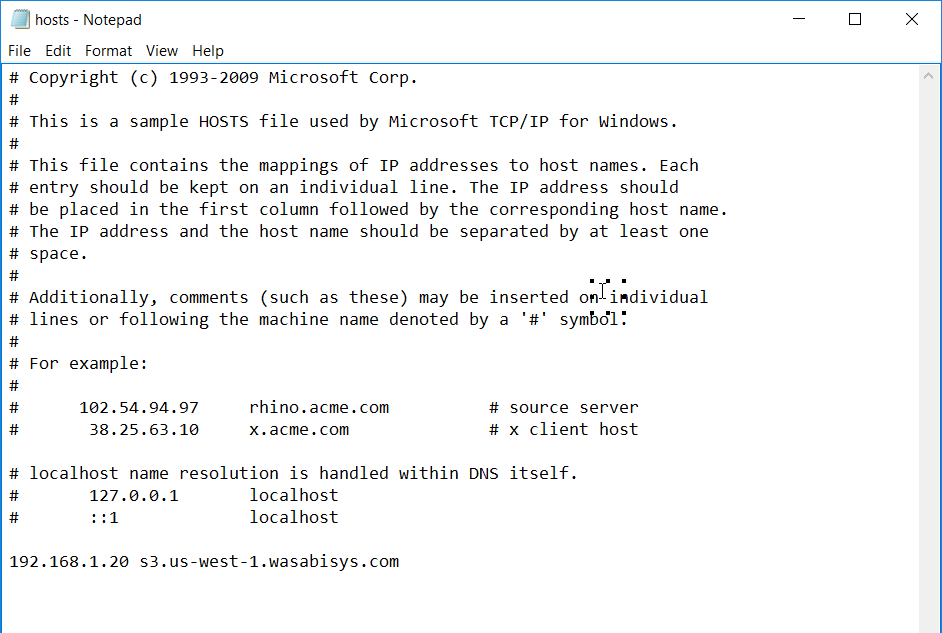
Adding a Backup Repository
Log into the Veeam Backup and Replication console and click Backup Repository.
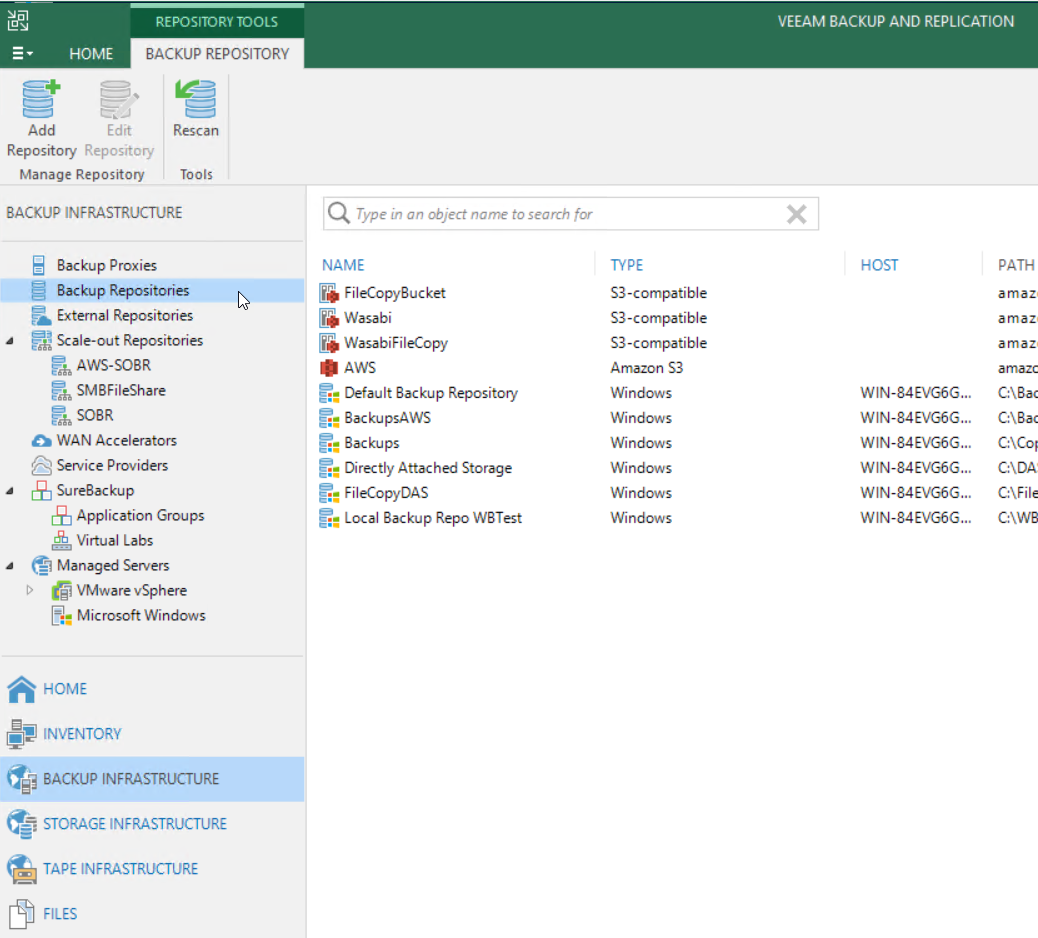
Click Add Repository.
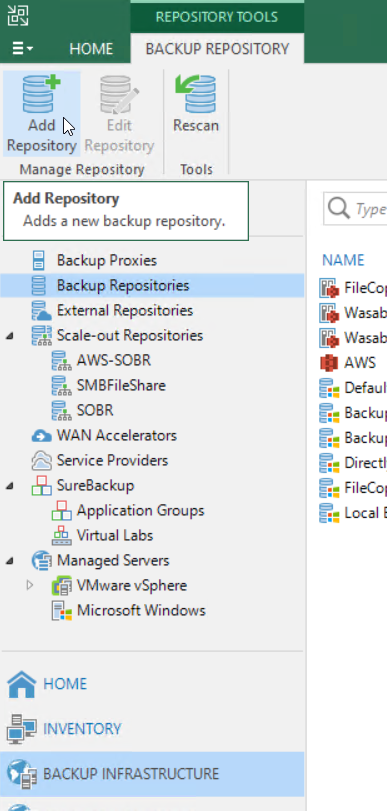
Select Object Storage.
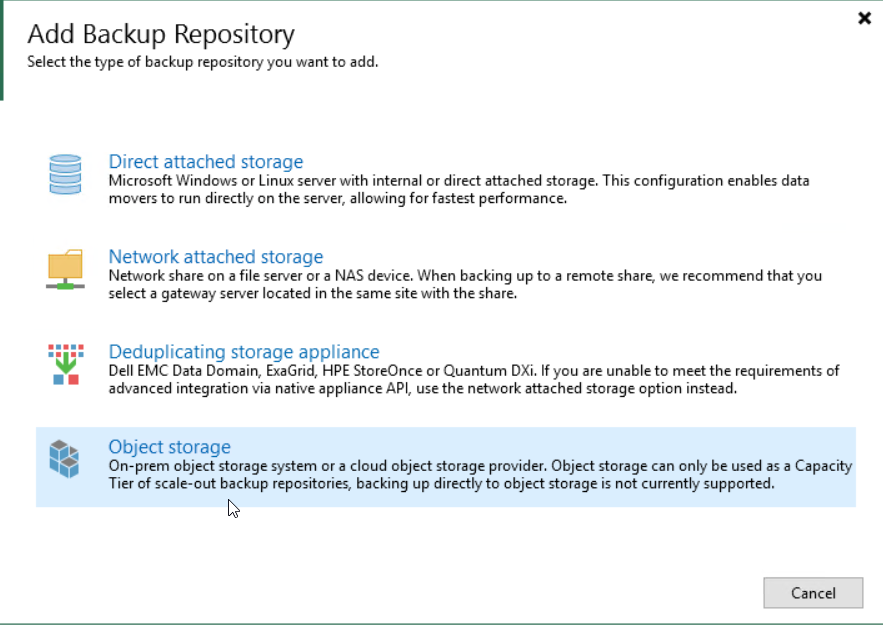
Select S3 Compatible.
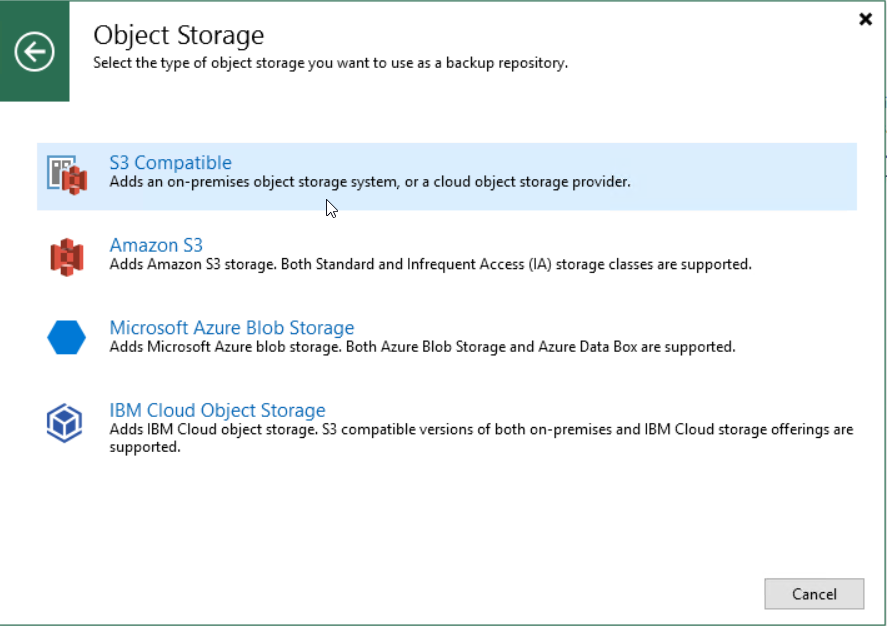
Enter a name (for example, “Wasabi Storage”). Click Next.
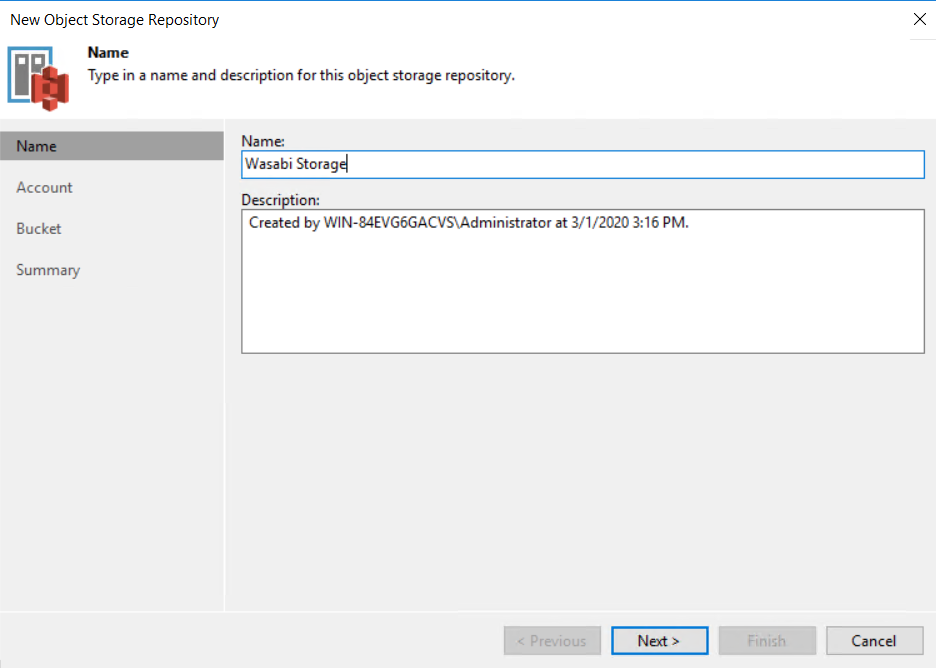
Add the appropriate Wasabi region URL. This needs to match your bucket region and the hosts entry from Step 1. Enter your Wasabi credentials. Click Next.
The Wasabi Ball will authenticate using your Wasabi cloud storage credentials.
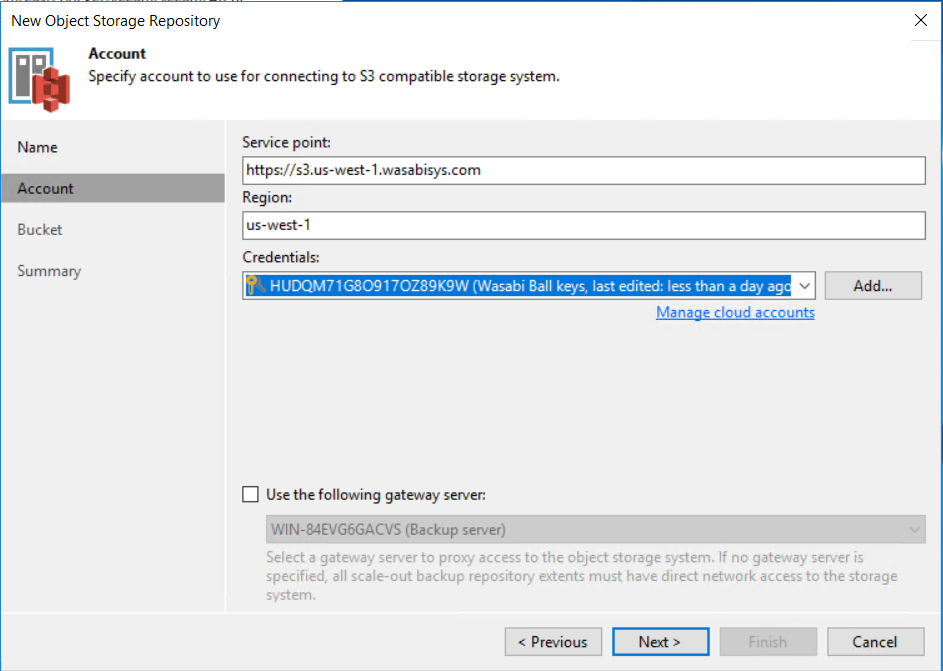
You will see the alert box below confirming a connection to the Ball. Click Continue.
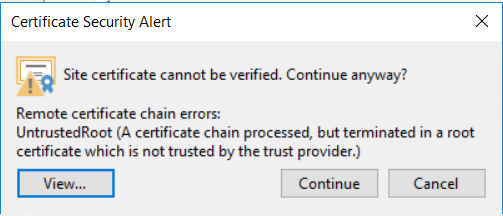
Veeam will list the different folders on the Ball. Select the folder matching your Wasabi bucket name.
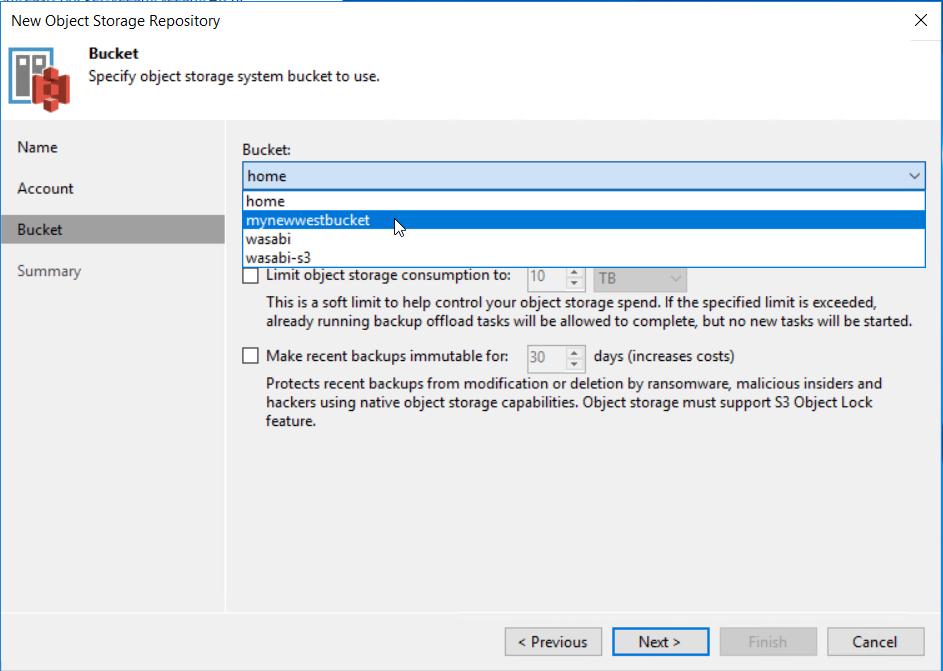
CAUTION: Be sure that "Make recent backups immutable" is not checked for the Wasabi Ball.
Click Browse. Then, click New Folder. Enter a folder name (for example, SeedData). Click OK and then Next.
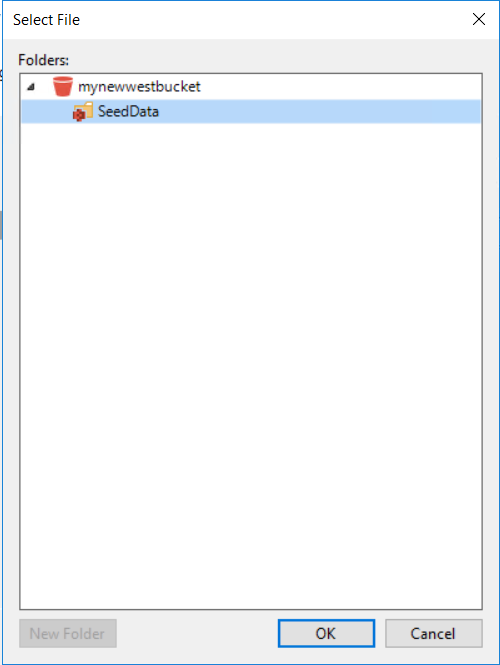
Click Finish on the Summary page. This confirms that the configuration has been entered successfully.
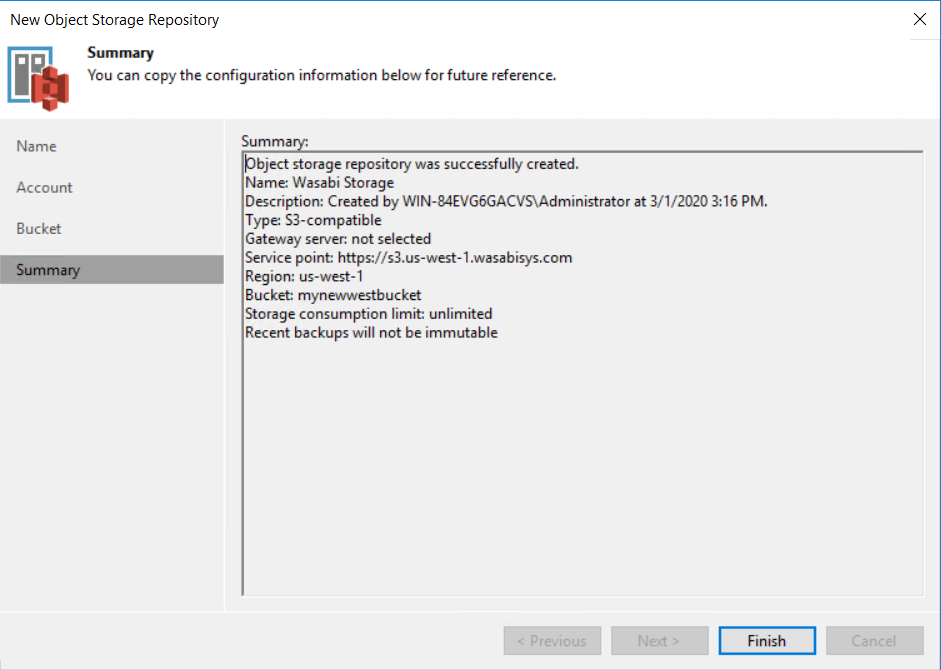
Adding a Scale Out Repository
Below are the steps to build the Scale Out Repository. This is used to tie with Primary/Local storage with the object storage.
Click Scale Out Repositories.
Click Add Scale Out Repository.
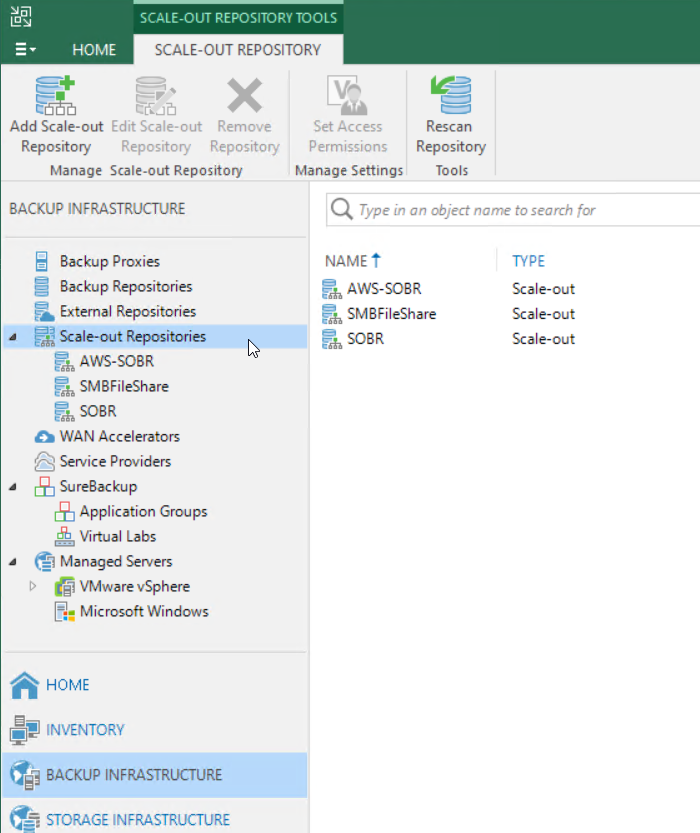
Enter a name. For example, “Wasabi SOR,” as shown below. Click Next.
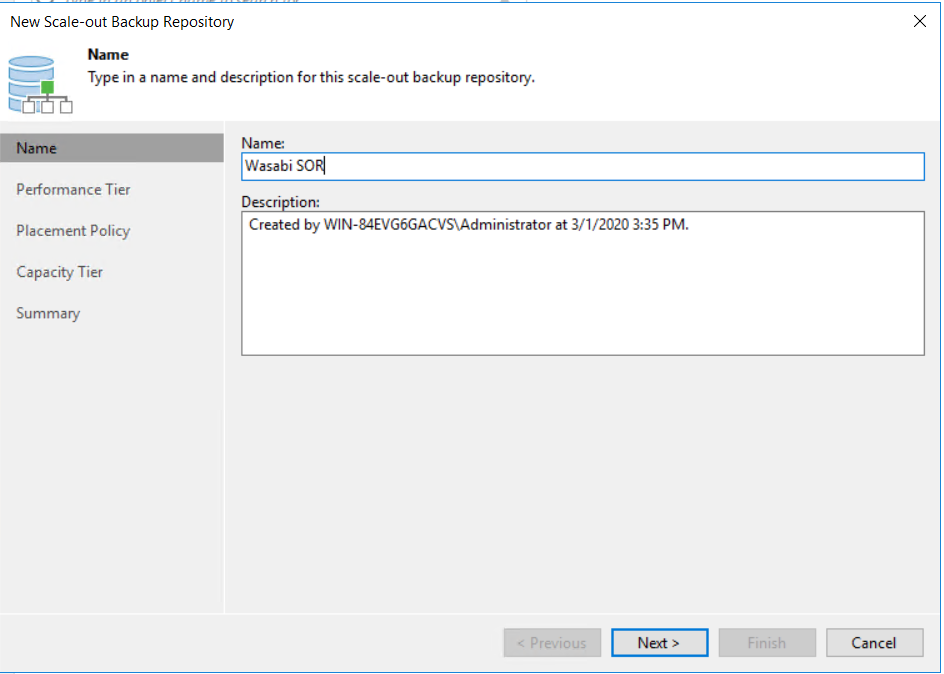
Click Add. Veeam will list the available local/primary repositories. Select the appropriate repository. Click OK.
Click Next to confirm.
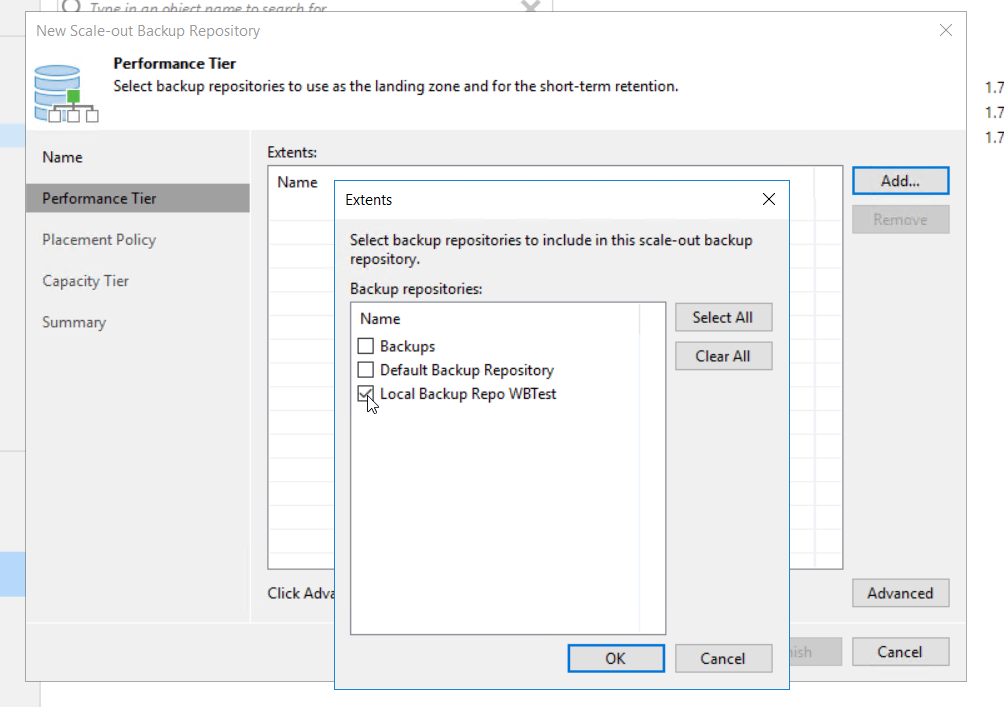
Keep the default settings, as shown below. Click Next.
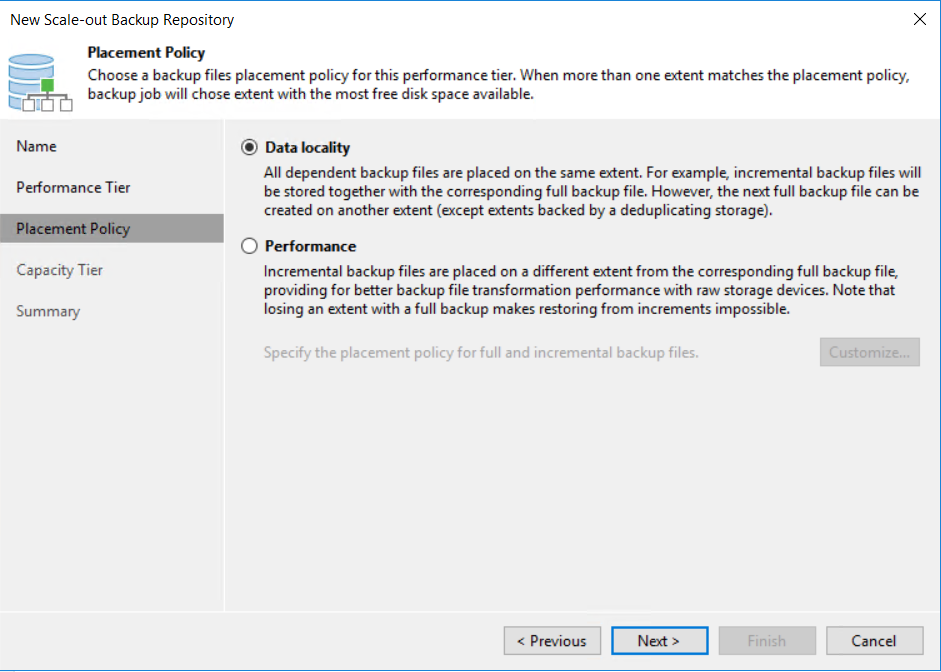
Click the checkbox (box icon) to select the Wasabi Backup Repository built in Adding a Backup Repository. Optionally, you can also check the Copy backups to object storage option.
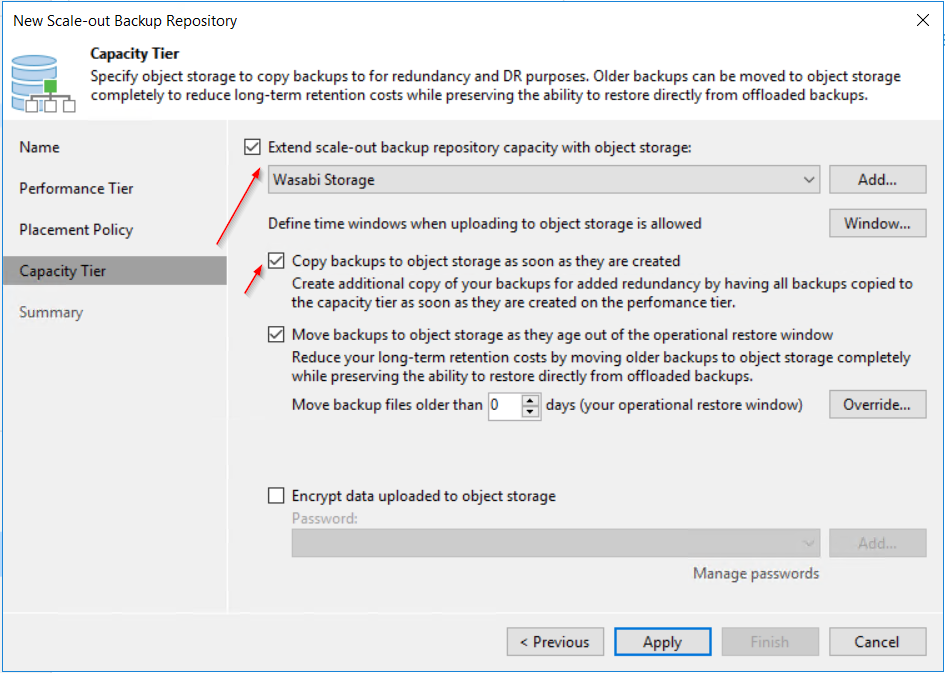
Click Apply.
Click Finish on the Summary page to confirm the configuration.
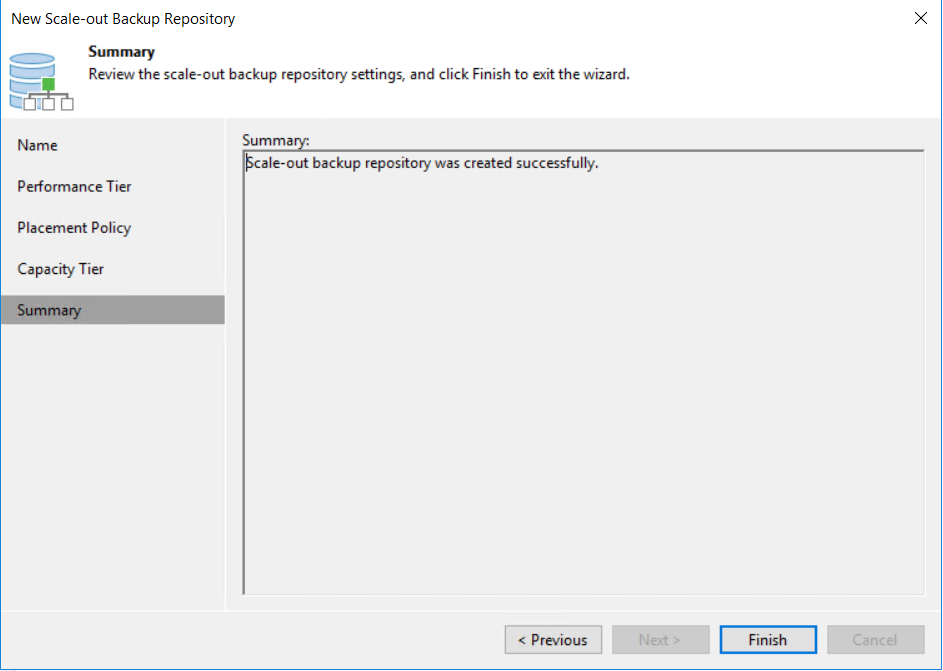
At this point, we have successfully built the Wasabi Backup Repository and the Scale Out Repository to build the association between the local/primary storage repository and Wasabi repository.
Creating Backup Job
To start writing to the Wasabi Ball, configure a Backup Job. To begin, follow the steps below:
Click Home.
Click Jobs.
Click Backup Job. Select Virtual Machine, as shown below.
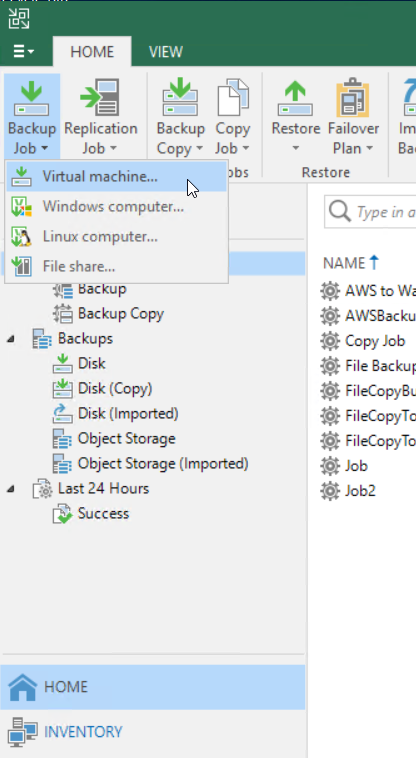
Enter a name for the Backup Job.
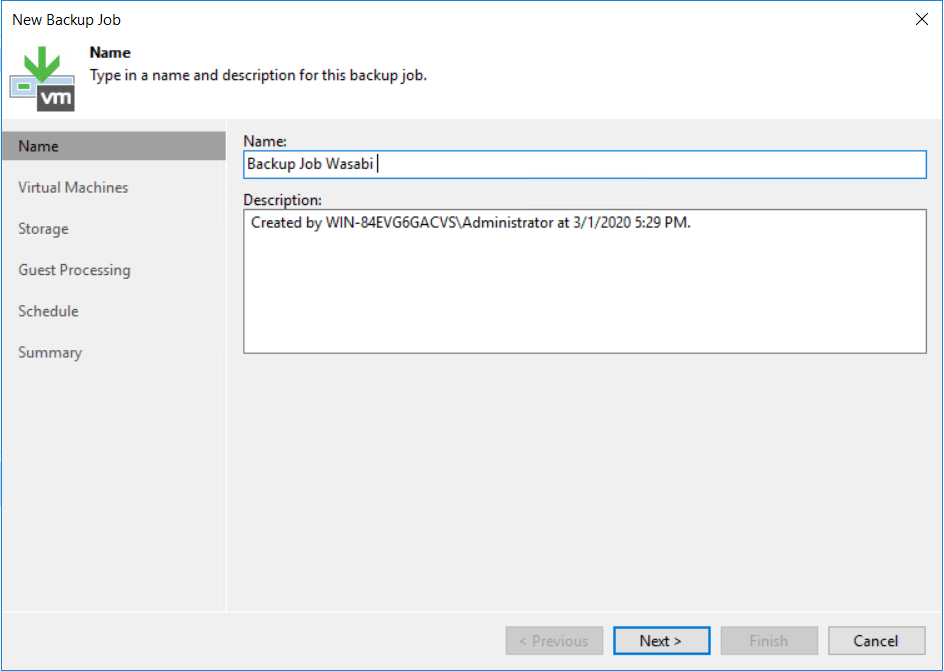
Click Add to add the VM. Select the VM in which to be backed up and click Next.
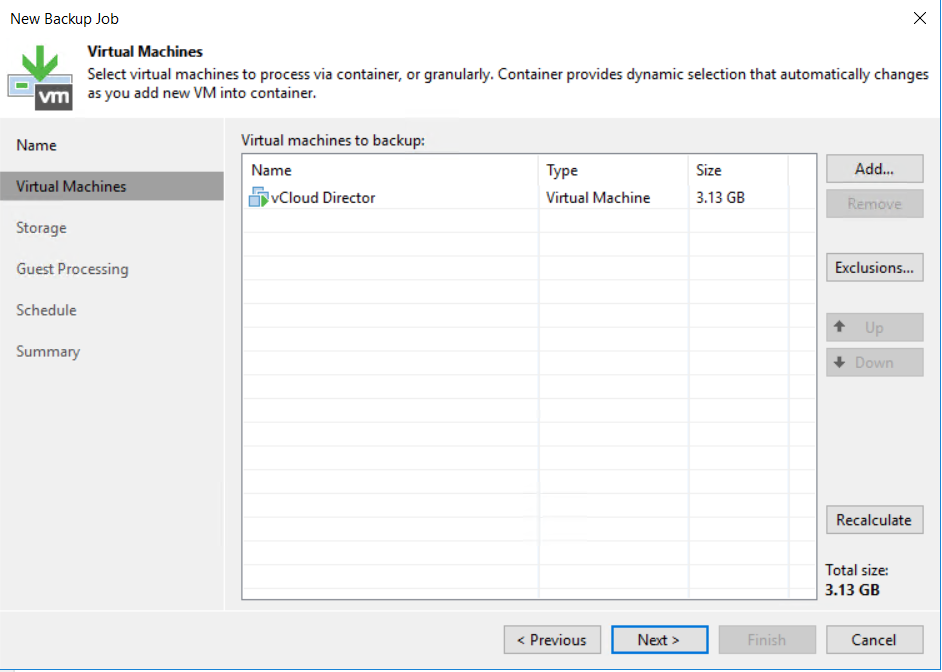
Select the Scale Out created earlier as the Backup Repository. Click Next.
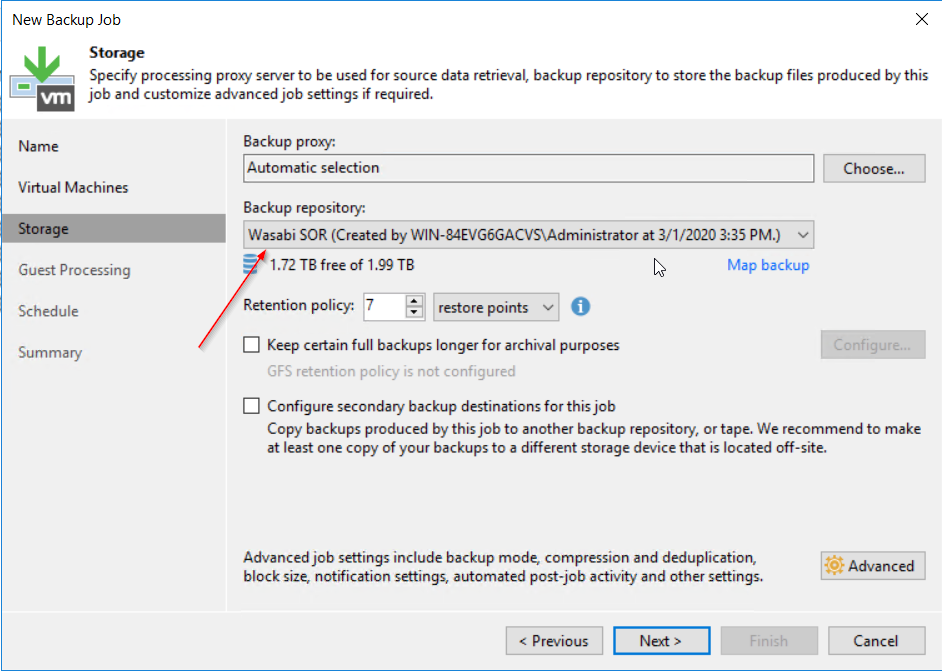
Keep the default settings on this screen. Click Next.
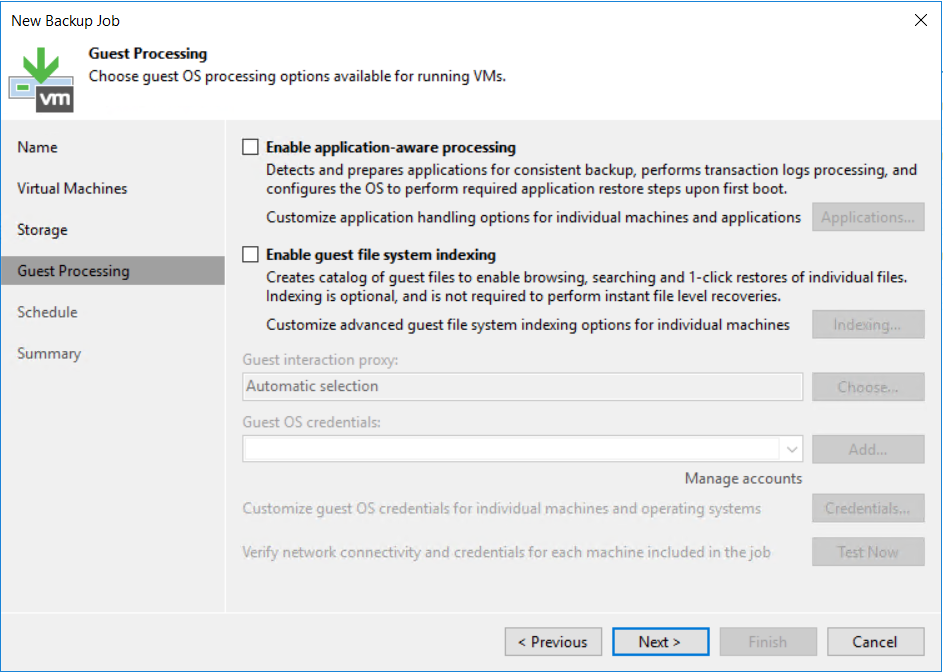
You may use the auto scheduler or keep it unchecked and opt to run the job immediately.
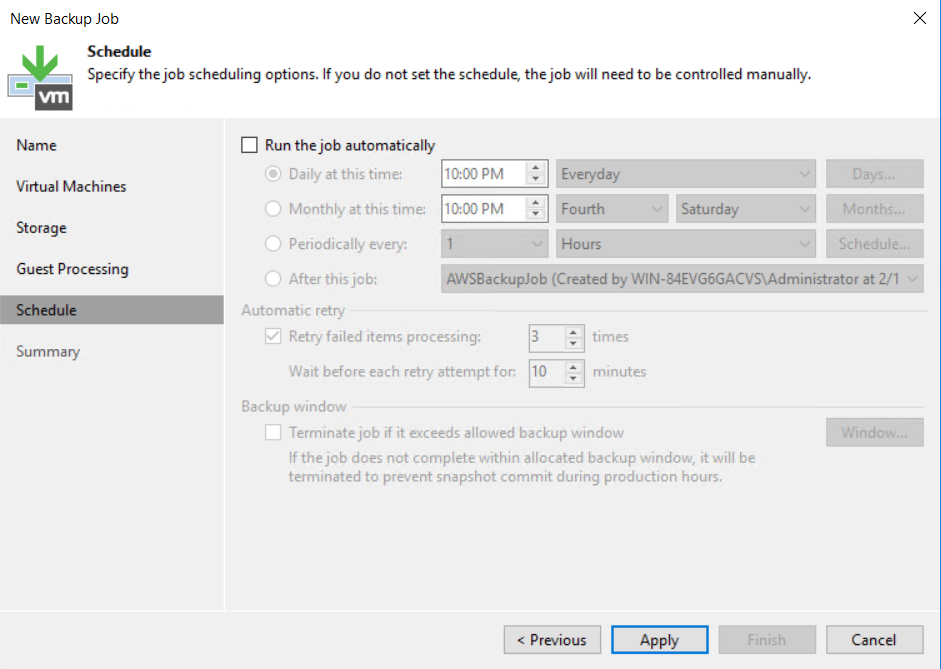
Click to check the Run the job when I click Finish box to run the job immediately. Click Finish to initiate the job.
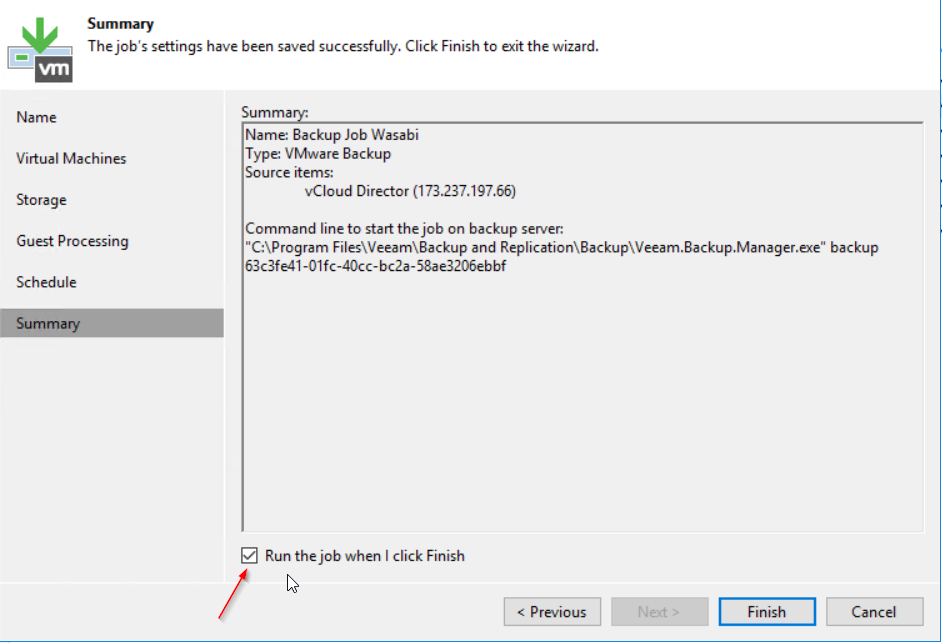
You should see the Backup Job progressing by first writing to the Primary storage.
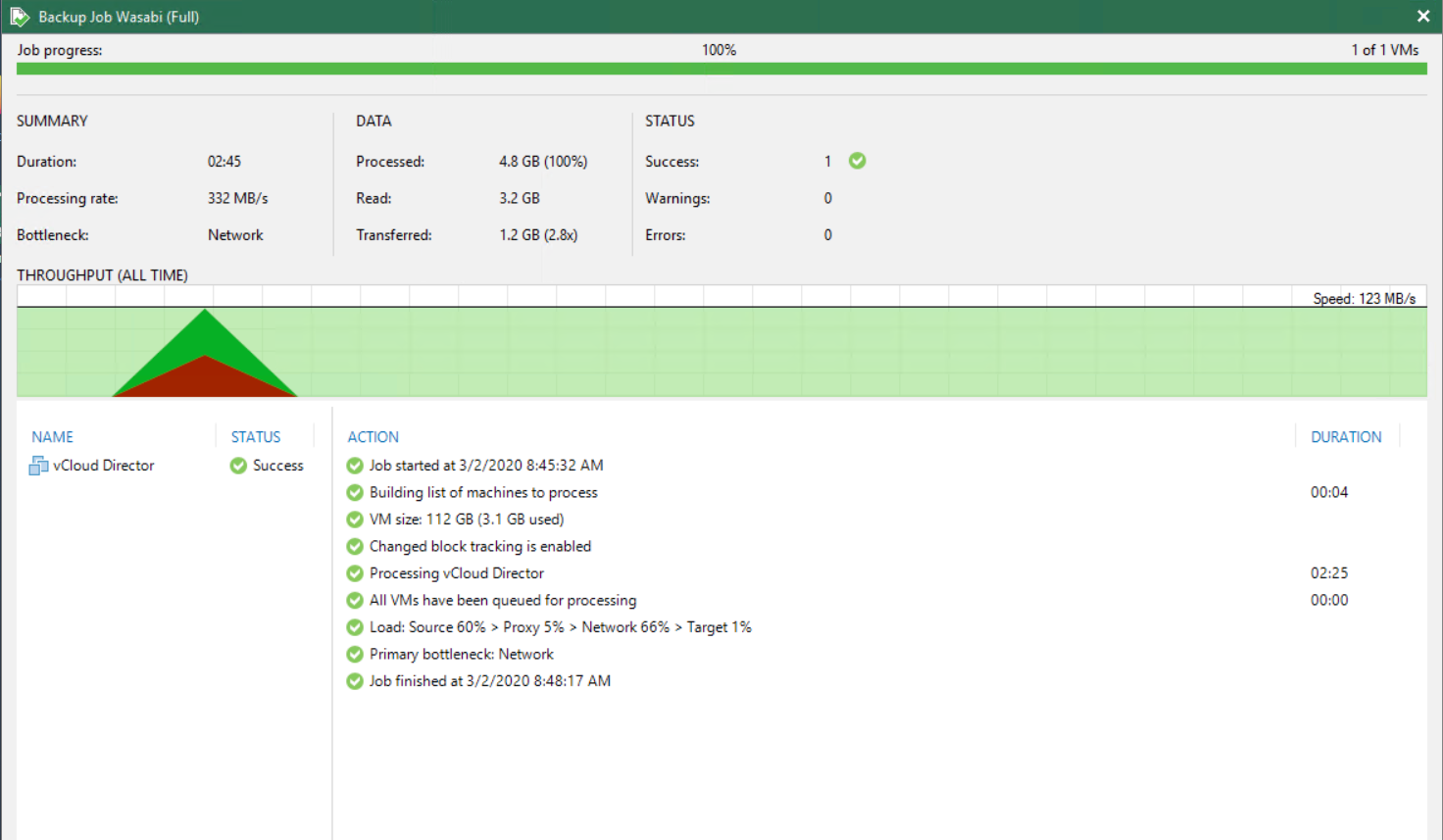
When the above step completes, Veeam will then initiate offloading to the object storage (the Wasabi Ball), as shown below.
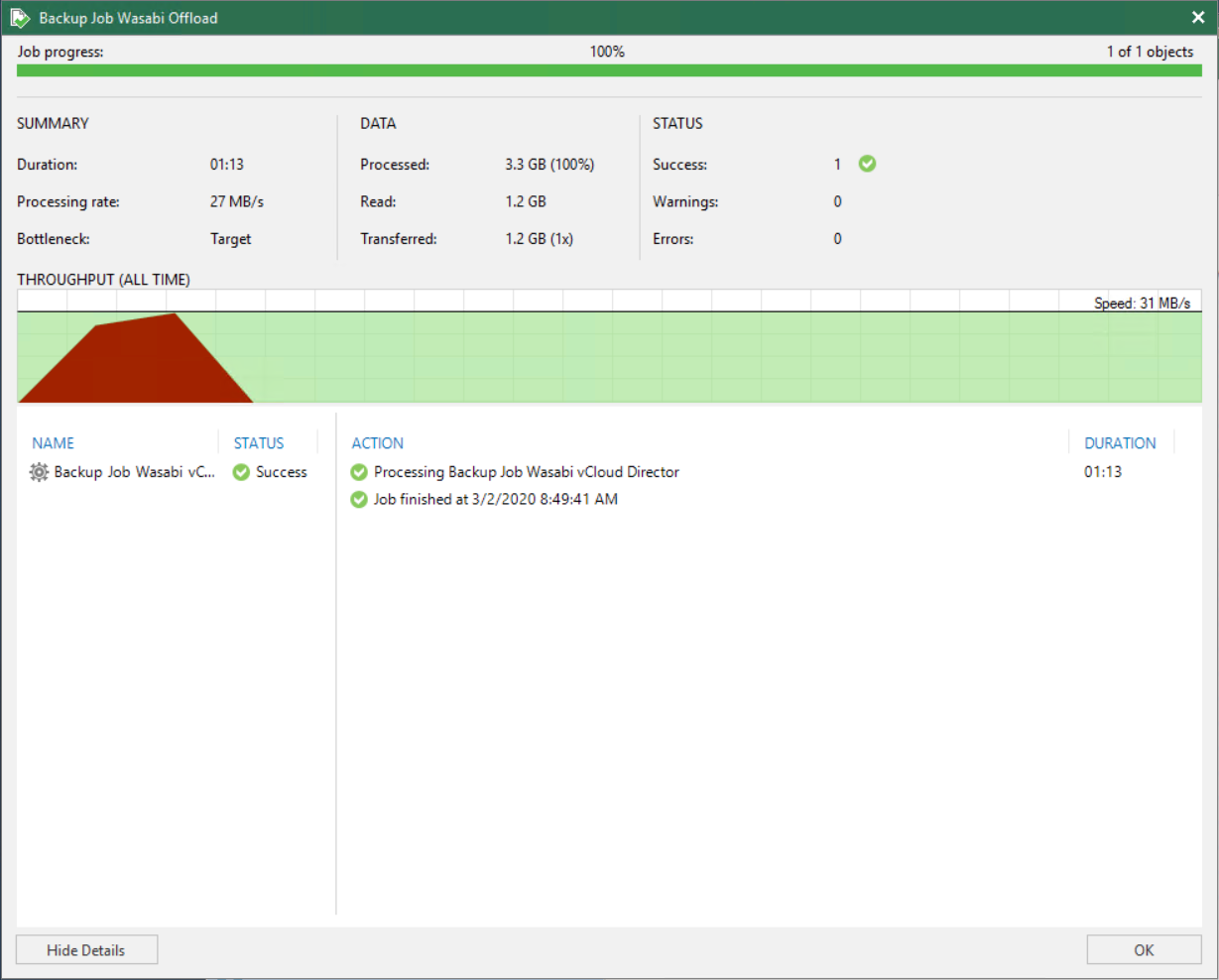
At this point, the backup has been written to the Wasabi Ball. Wasabi engineers will ingest this data from the Ball to your bucket once they receive the Ball back.
Reverting Back to Temporary Changes
To revert back to the original Veeam configuration:
Delete the hosts entry made in Step 1. Save the file.
Edit the Wasabi Backup Repository in order to change the credentials created in Step 7 from the Wasabi Ball credentials to your Wasabi storage access and secret key.
For more detail on importing backups to the new Wasabi bucket, review Importing Object Storage Backups.